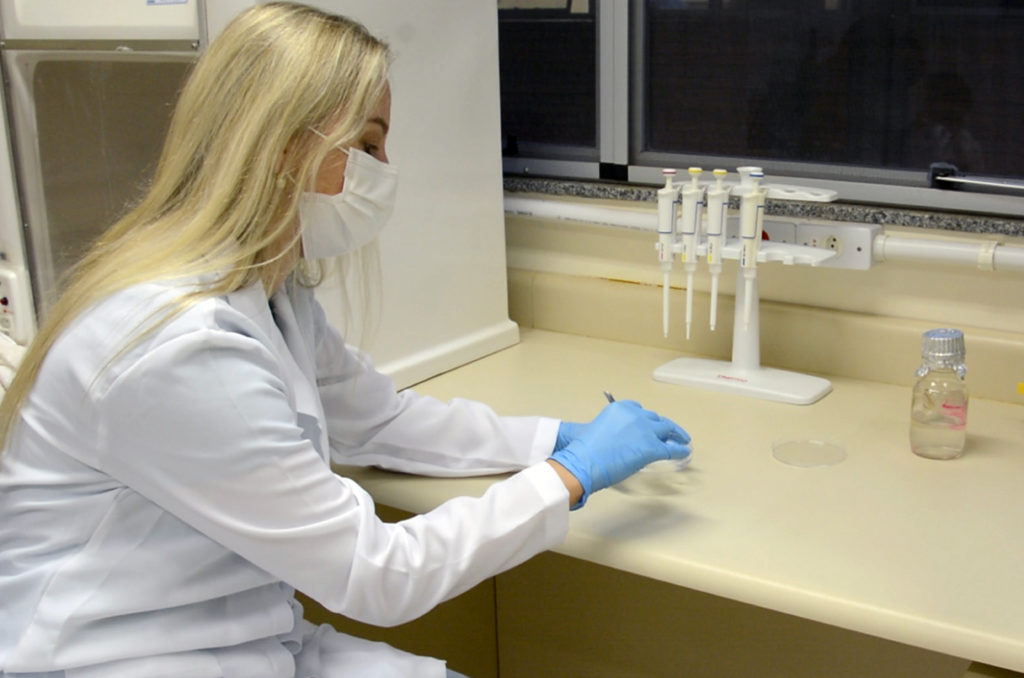São Paulo – Demand, sustainability, animal welfare and innovation reasons. There are several drivers for the worldwide search to produce lab-grown poultry products, and Brazil is in the race. One of the projects in the Latin American country is being carried out by the Brazilian government’s agriculture research agency Embrapa, which plans on finishing its cultured chicken breast fillet prototype by the end of the year.
Embrapa’s study to develop cultured poultry has been carried out since early 2002 in its Swine and Poultry Unit in the city of Concórdia, Santa Catarina. With financial resources near BRL 1 million (USD 200,000), obtained from international organization The Good Food Institute (GFI) by means of a bidding process, the project now features 15 professionals in the fields of zootechnics, veterinary, chemistry, genetics, medicine, food engineering, economics, and bioinformatics.

It all started with the restlessness of food engineer Vivian Feddern, who works on meat quality at Embrapa in Concórdia and was encouraged to delve into the topic of cultured meat. After doing some research on the subject, presentations in conference rooms, and not very successful attempts to publish essays on the topic in journals due the resistance to the topic, she saw in the bidding process a chance to turn the theory into practice and establish Embrapa firmly in this cutting-edge research.
Then came the formation of a multidisciplinary team merging knowledge of different fields, the purchase of equipment, and the start of the lab work. Feddern, who’s the leader of the project and has a master’s and a doctoral degree in Food Engineering and Science, says that they chose to remove cells from embryonated eggs to produce the meat. In a simplified explanation of the process, the cells are put into containers with nutritive medium with the substances needed to grow and multiply, in an environment that needs to be renewed.

At a later state, the cells will go into a bioreactor, a machine bought by the project that has been delivered to Embrapa but still needs related equipment to come into operation. In the bioreactor, there’ll be a bigger expansion of the cells and the possibility of more control on the process, and other benefits. According to Feddern, the work is now focused on making the cells stick to each other, thus forming a sasami fillet, which is the goal of the project. “We need to make sure that it’s 3D, that it actually reminds meat,” the researcher said.
Feddern says the basis of cultivated meat is tissue reconstruction. She sees in the cultivation the benefit of adding products to the meat like fiber or omega, for instance, thus turning it into a customized food. The project at Embrava, however, aims to reproduce only a traditional chicken fillet. “Our goal is to make it at least similar, as an improved, customized version would be a step further,” she said.
Market and prices

When the prototype is ready, Embrapa plans on finding a firm to move the project forward, including putting the cultivated poultry in the market. Feddern said there’re already some companies interested. The work within Embrapa would also include economic feasibility studies on the product, though. The researcher said right now the cultivated meat is far from being able to compete with traditional chicken. She believes a similar value could only be achieved 10 to 15 years from now.
She also believes that at first the cultivated poultry would only be consumed by people with higher income and those who want to taste it. Feddern said people are curious about the taste. “Another good thing is its sustainability appeal,” she added. If additives were to be put in, it would be more expensive, Feddern said.
Where is there consumption?

There’s already consumption of cultivated meat in some countries around the world. In the case of poultry, there’re legislation approved for consumption in Singapore and the United States. The latter gives licenses to specific firms and products. Two companies are currently authorized to sell in the US. In Brazil there’s no legislation yet. Feddern believes when it comes out, it would come from the Ministry of Agriculture and Livestock in conjunction with Brazilian health regulator Anvisa.
There’re now 25 ongoing cultivated poultry projects around the world. The leader of the project at Embrapa doesn’t see the new product as a threat to traditional chicken and believes there’ll be room for both. “Traditional meat will never end,” she said. She even sees the cultivation as a possibility for production in areas like the Arab countries, where there aren’t climate conditions suitable for raising chickens. The engineer believes the Arab countries could be partners of Brazil in this area, with technical cooperation, development, and expertise exchange.
Translated by Guilherme Miranda




